I don’t believe in ghosts. BUT, I really thought I saw one. As I wandered along the outer walls of Château de Lagarde in the Ariège, something caught my eye—a shadow moving across one of the crumbling towers. I froze. I shook my head and wondered, “Did I see something peering down at me or was I imagining it?” Moments like that remind me why these ancient ruins are so hauntingly beautiful.
Château de Lagarde has been through it all—sieges, neglect, and centuries of disuse. Today, it’s literally falling apart. So much so, that it’s now closed to the public except for special events, and the owners are even offering it up… for free.*
[Yes, you read that right. Free.* But there’s a catch. Restoring this medieval masterpiece would cost millions.]
1. Château de Lagarde (Ariège Department)
During my 33rd trip to France, as I headed north to Carcassonne from Camon (one of Les Plus Beaux Villages de France), I decided to visit a French château that had been almost completely destroyed during the French Revolution but has retained enough of its design to be very impressive. I have a thing for castles and don’t care if they are in pristine condition or in ruins—as long as the architecture is interesting.
Château de Lagarde is located in the village of Lagarde, 7 kilometres southeast of Mirepoix. The silhouette of the castle ruins can be seen from far away and it has quite a commanding presence overlooking the valley below.
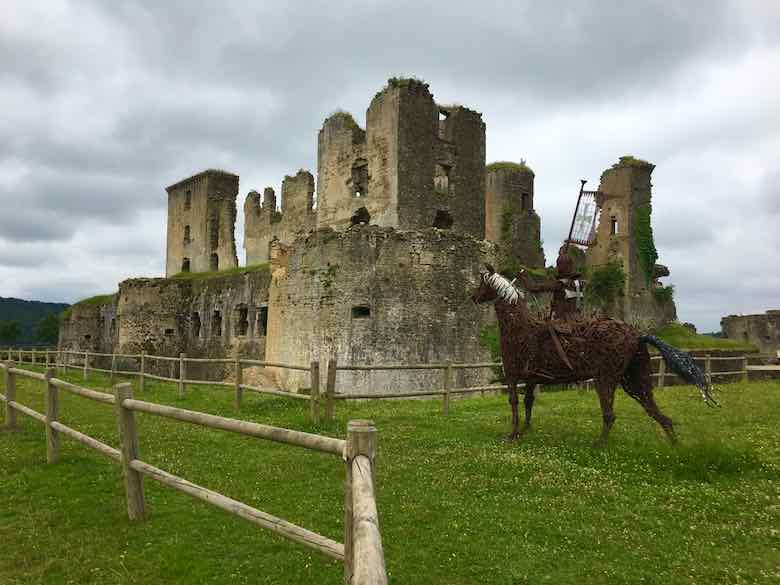

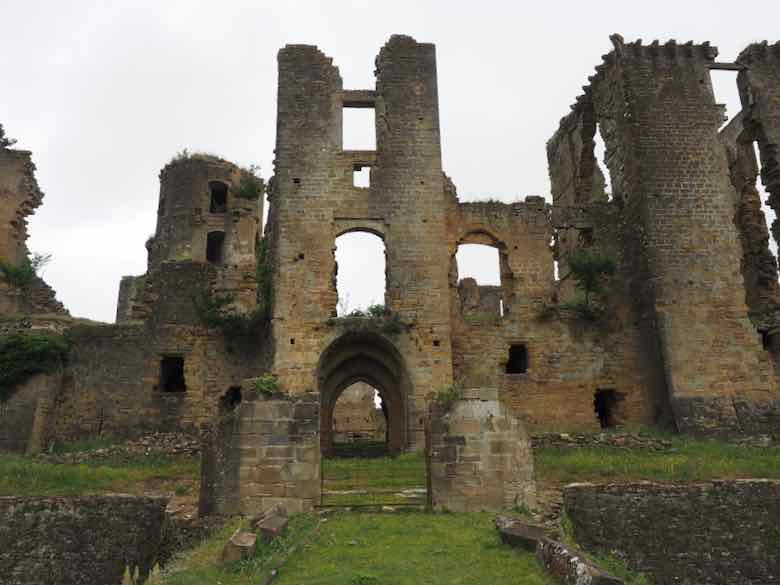

2. A Ghost (Or Was It A Goat?)
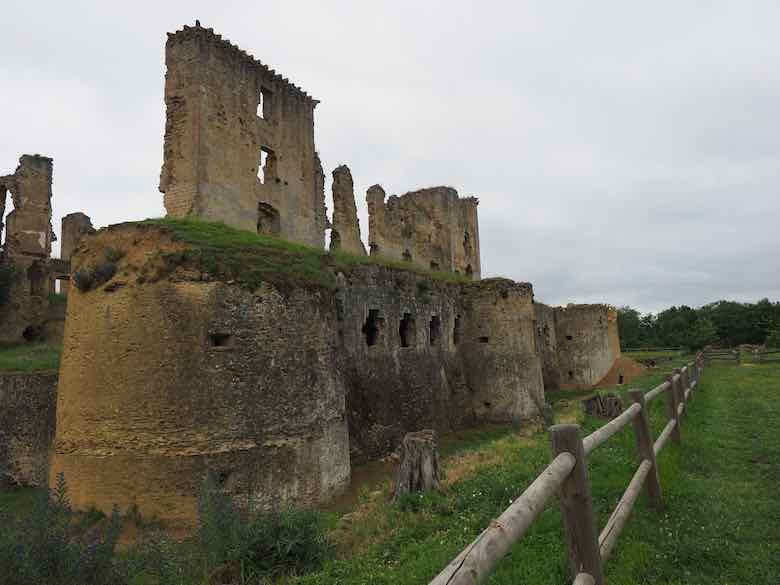

After paying my admission, I was left on my own to explore the property and château. You can’t go inside because it’s too dangerous. There are lots of crumbling structures. Only the exterior walls and towers remain, so you do a circuit around the outside and you can get various views of the inside.
It was at the beginning of my visit that I had my first hallucination sighting. There was absolutely no sound. It just seemed like something was moving from on top of the tower. I continued to make my way down the path, looking at the impressive remains of this 700-year-old medieval castle. Look at the next photo carefully!
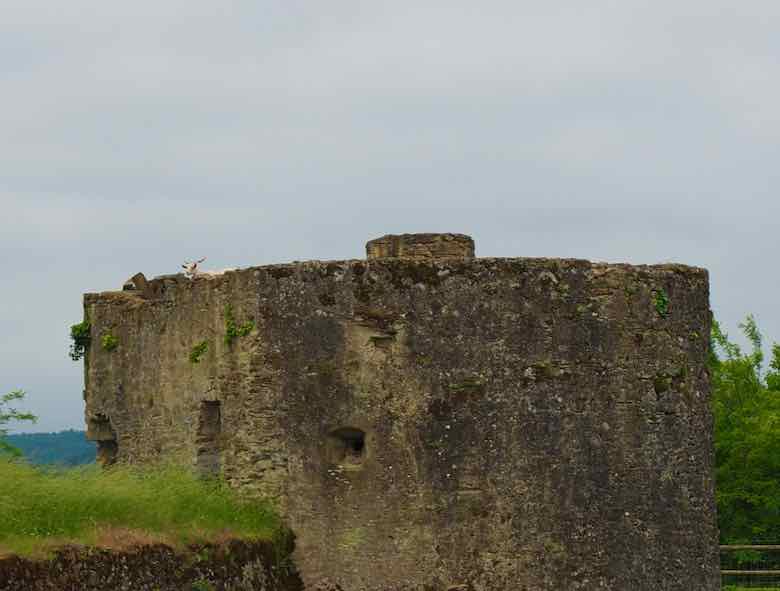

When I turned the corner, I discovered my apparition had actually been a goat on top of the tower! He/she was in a herd of goats (OK, well 4 that I could see). They had been grazing throughout the castle and how they got to the top of the tower I’ll never know! There is a moat and fence, so there is no way they could get out. I guess the owners have decided to use this area as pasture. So, no ghost(s). Just goats.


3. History Of Château de Lagarde
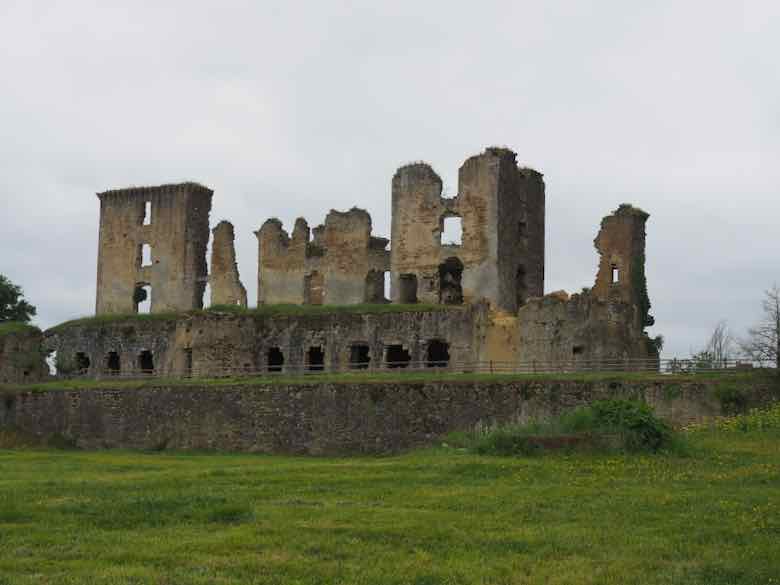

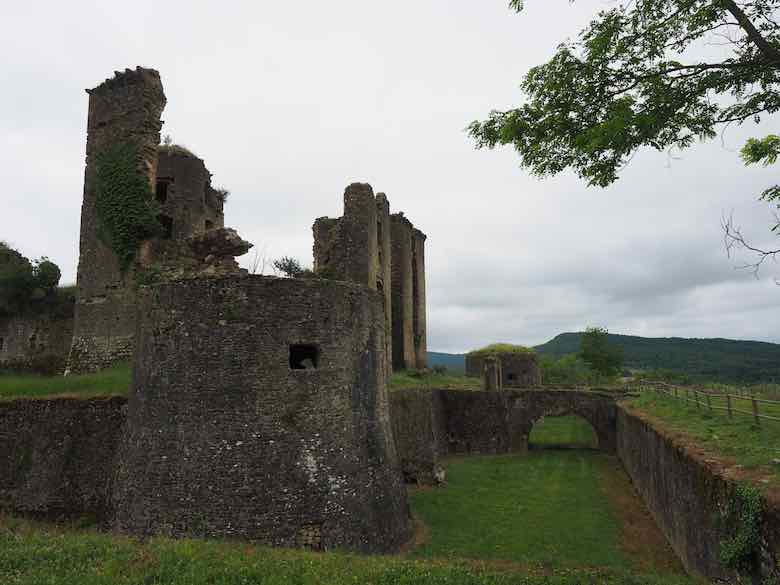

With that bit of excitement over, I was able to concentrate on the ruins and some of the signposts scattered around which gave insight about the château’s long and dramatic past. The château’s design changed with each new ancestor. Here’s a quick look back:
- Château de Lagarde began as a medieval fortress. The original castle was constructed on this site in the 11th century; however, there are no signs of the original fortress.
- It is not until the 13th century that Guy I de Lévis is given the title of a feudal lord and in the 14th century the family built a castle on the hill near Mirepoix. Originally the castle was designed in a quadrangular shape with five square towers. But sadly, construction stopped as Francois de Lévis died. It wasn’t until the 15th century that Jean IV altered the design and finally finished its construction. He wanted it to be better protected against attacks.
- Jean’s son continued the restoration of the fortress and incorporated more elements that are often seen in the châteaux of the Loire Valley, with grand staircases and a chapel.
- In the 17th century, it is Louise de Roquelaure (the widow of a Lévis descendent) who adds terraces, statues, French gardens, and ponds that cover over 15 hectares. There is even a “Hall of Mirrors”, much like what you would see in Versailles. As a result, the château is nicknamed, “Versailles des Pyrénées”.
- During the French Revolution, another Lévis descendent, Charles-Philibert was arrested and sent to the guillotine in Paris. The château was looted and some of the stones from the château were sold off. The rest was to be destroyed but it was not entirely demolished. It was converted into a stone quarry and warehouse and was eventually sold. Due to many years of neglect, it fell into ruin.
- In 1889 the château was classed as a historic monument and in 1919 duke Antoine de Lévis-Mirepoix bought the château. He sold it in the 1980s to a
Francis Tisseyre. Since then there is an association comprised of more than 40 volunteers that works with him to preserve the castle and share its history. They have held special events such as fireworks, “vide grenier” (garage sales), Easter egg hunts, medieval fairs, and equestrian competitions to help raise funds to prevent the site from deteriorating further.
4. Past Exhibits And A Must-see Video
Before the château was closed to regular visitors, one could also learn more about its past by viewing a 20-minute video in the courtyard. It featured a 3D animated reconstruction that brought the ruins to life and explained the evolution of the site. On the second floor of the main building, there was also a small display of artifacts and models curated by the local association of Lagarde. They even created a detailed booklet (written in English) outlining the family history and architectural changes through the centuries.
While these exhibits may only be available during special events now, you can still get a fantastic aerial view of the château thanks to this short clip from the 2016 Tour de France: YouTube
5. The Château Is Up For Sale
After many wars and centuries of neglect, many sections of the castle were deteriorating and the walls, foundations, and structures were at risk of collapsing. The Department of Cultural Affairs banned them from having future visits and in the summer of 2024 it was closed to the public.
The owners and preservation association that helps look after the site decided that there simply weren’t enough funds to take care of the extensive restoration. It would take millions of Euros. They had no choice but to sell the château.
It is said that the potential buyer wouldn’t have to pay a cent for the castle. Well, not quite. If a buyer could be found, that individual (or individuals) would need to spend millions on restoring the château in order to make it accessible to the public. Nothing is ever “free”.
6. Special Events At Château de Lagarde
Now that the château is closed to the public for tours, the only chance you’ll have to see these ruins is when they have special events, like this one in the summer of 2025:
- Date: Sunday, July 6, 2025
- Time: 9:00 am to 6:00 pm
- Theme: Vintage cars and motorcycles.
- Refreshments and food will be available on site.
- Address: 09400 Lagarde, Ariège
If you’re interested in more places to visit related to medieval times and castles, check out these posts: Experiencing Medieval France, Cité Medievale de Conflans In Albertville, and Le Château des Baux de Provence.
Pin to your favourite board on Pinterest































